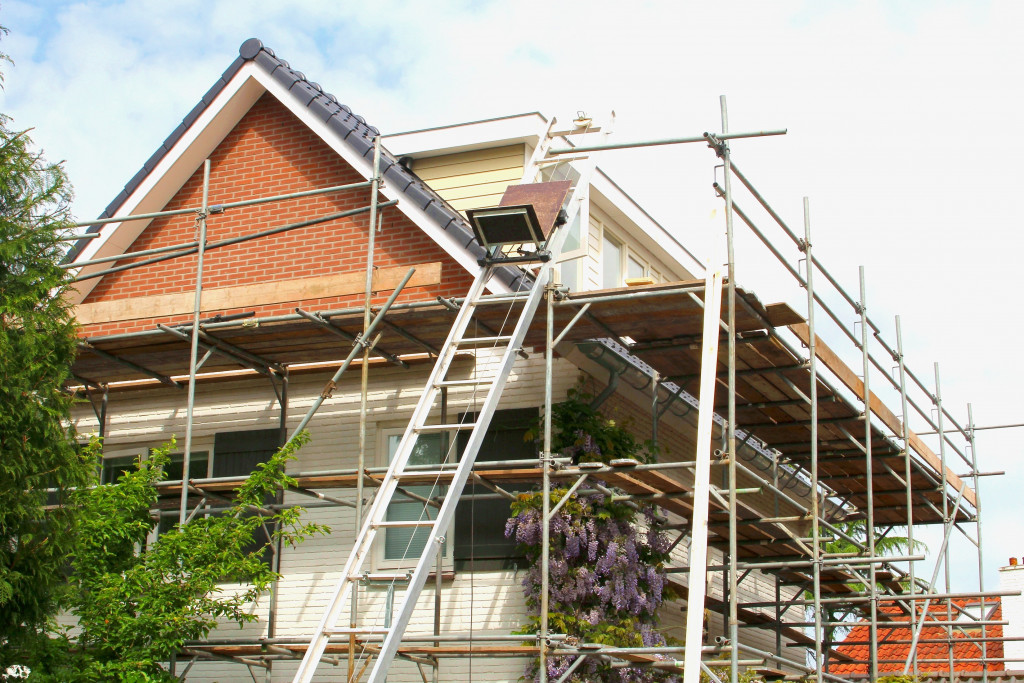Spring will be right around the corner, so now is the perfect time to start thinking about weatherproofing your home. Not only will weatherproofing protect your home from the elements, but it can also increase your home’s value. Here are a few simple tips on weatherproofing your home to increase its value.
Landscape Around Your Home
Take some time to landscape around your home. Plant trees and shrubs around the perimeter of your house to help provide additional protection from the sun and wind. These can also help improve curb appeal, adding more value to your home.
Adding vinyl fences may be the solution if you’re looking for a way to weatherproof your home further. Vinyl fences are durable materials that keep out moisture and pests while providing a decorative touch to your home. Adding vinyl fences is a great way to go when it comes to weatherproofing your home!
However, not all vinyl fences are created equal. If you’re looking to add vinyl fences as a way to weatherproof your home, make sure to follow these tips:
- Choose a high-quality vinyl fence. Not all vinyl fences are created equal – some are much more durable than others. Make sure to choose a high-quality vinyl fence that will withstand the elements and last for years.
- Opt for a vinyl fence with a warranty. A good warranty is always a plus, especially regarding something as crucial as vinyl fencing. Make sure the vinyl fence you choose has an excellent warranty to protect it from damage.
- Choose the right style of vinyl fence. There are many styles of vinyl fences to choose from, so make sure you pick the right one for your home. You want a type that will be both weatherproof and stylish!
Inspect Your Home’s Exterior Walls
Inspecting the exterior walls of your home is one of the most critical weatherproofing tips. Look for signs of water damage, such as peeling paint or cracking brickwork. If you find any issues, make sure to repair them immediately. Additionally, check for any gaps or cracks in the walls and seal them with weatherproof caulk or expanding foam.
If you find any gaps or cracks in the walls, seal them with weatherproof caulk or expanding foam. This will help keep out the elements and protect your home from damage. Apply a generous amount of caulk or foam to the cracks and let it dry. Then, use a putty knife to smooth out any excess.
Check Your Windows and Doors
Next, take a look at your windows and doors. Ensure that they are adequately sealed and that there are no gaps or cracks around them. If you find any, caulk or fill them to help prevent drafts from coming into your home.
You’ll need to do a few simple things to check your windows and doors for proper sealing. First, close all of the windows and doors in your home and check to see if any light comes through. If you can see the light around the edges of the windows or doors, they need to be appropriately sealed.
Next, try opening and closing the windows and doors to see if they move quickly. If they don’t move easily, there is likely a gap or crack that needs to be sealed.
Finally, use a piece of paper or a dollar bill to test for drafts. Place the paper or bill near the edge of the window or door and see if it moves. If it does, that means a draft is coming into your home. You can then take steps to seal it up properly.

Add Insulation
Adding insulation to your attic and walls is another great way to weatherproof your home. This will help keep your home cooler in the summer and warmer in the winter, which can lead to lower energy bills year-round. Insulating your attic is a great way to weatherproof your home.
Although there are many types of insulation, not all provide the same quality. Here are a few tips on how to choose suitable insulation materials for your home:
- Choose the correct type of insulation. There are many different insulation materials available, so make sure to choose the best suited for your needs. For example, if you live in a cold climate, you’ll need to choose an insulation material to keep your home warm.
- Choose the proper R-value. The R-value of an insulation material refers to its ability to resist heat flow. The higher the R-value, the better the insulation material resists heat flow. Make sure to choose an insulation material with a high R-value so that your home is adequately insulated.
- Choose the right thickness of insulation. Insulation materials come in different thicknesses, so choose one thick enough to provide adequate insulation. The thickness of an insulation material also affects its R-value, so select one with a high R-value for optimal insulation.
- Choose the correct type of installation. You cannot install all types of insulation in every location in your home. Make sure to choose an installation method best suited to your needs. For example, if you have an unfinished attic, you’ll need to select an insulation type that can be blown into the space.
Following these simple tips, you can easily weatherproof your home and increase its value simultaneously! So what are you waiting for? Get started today!

